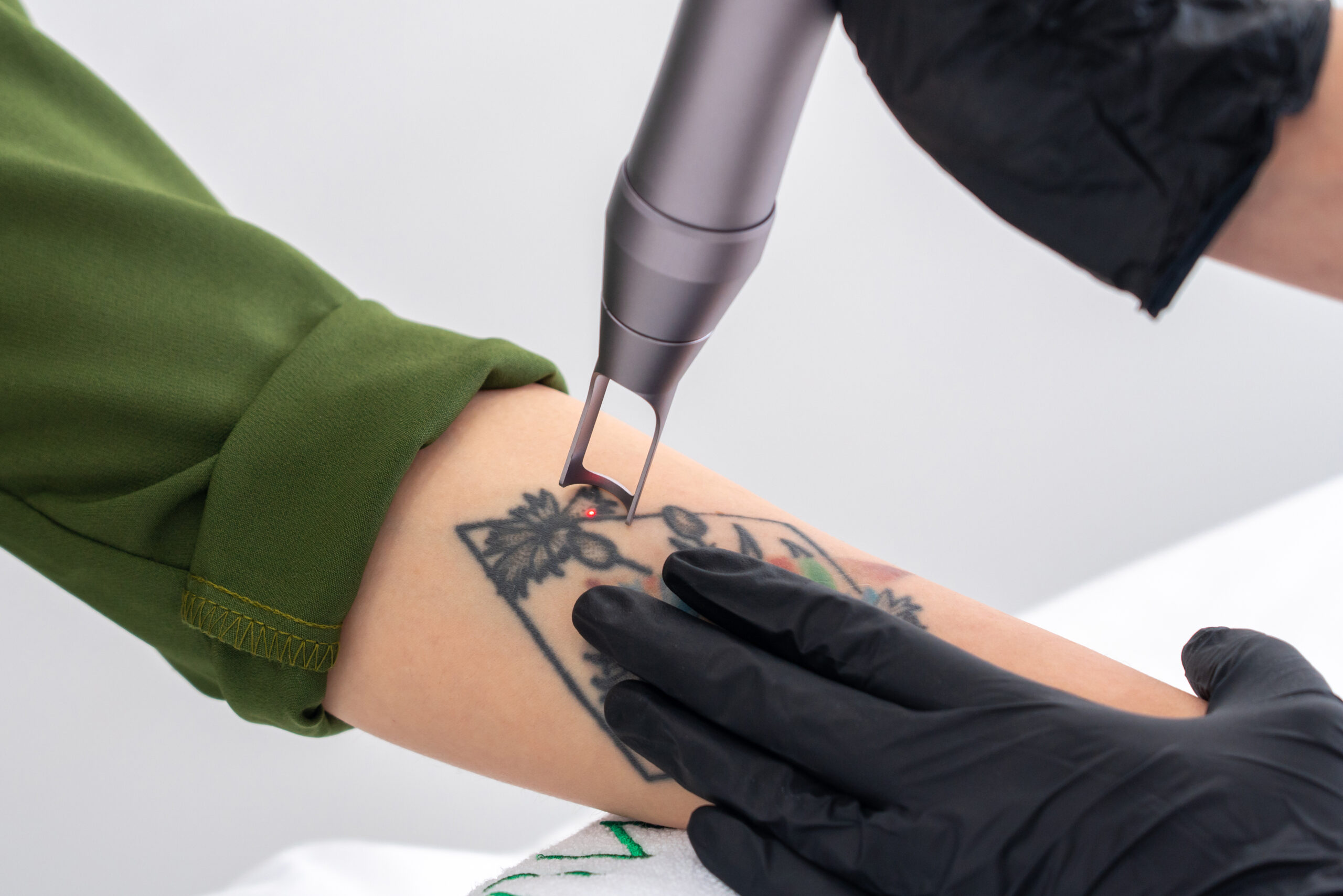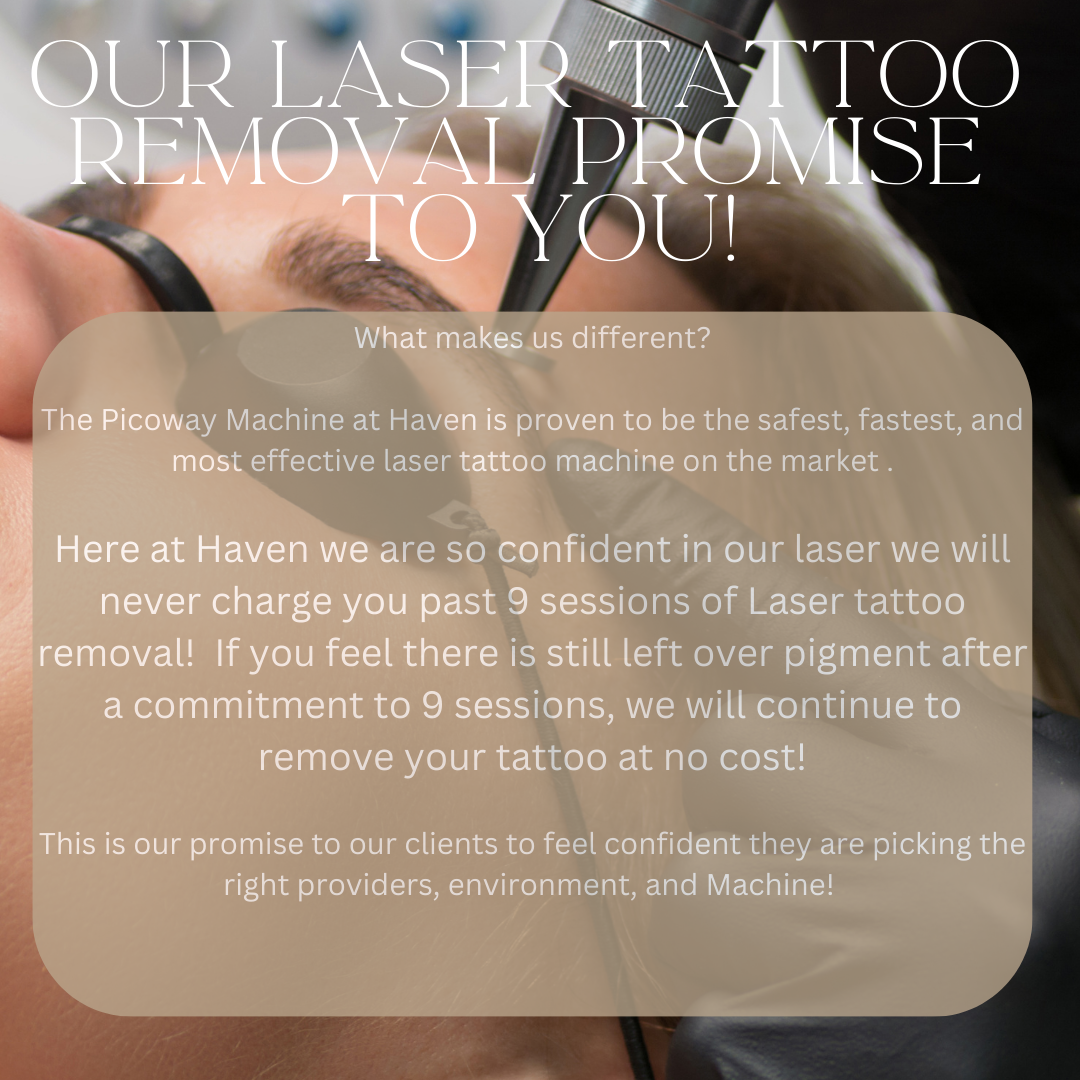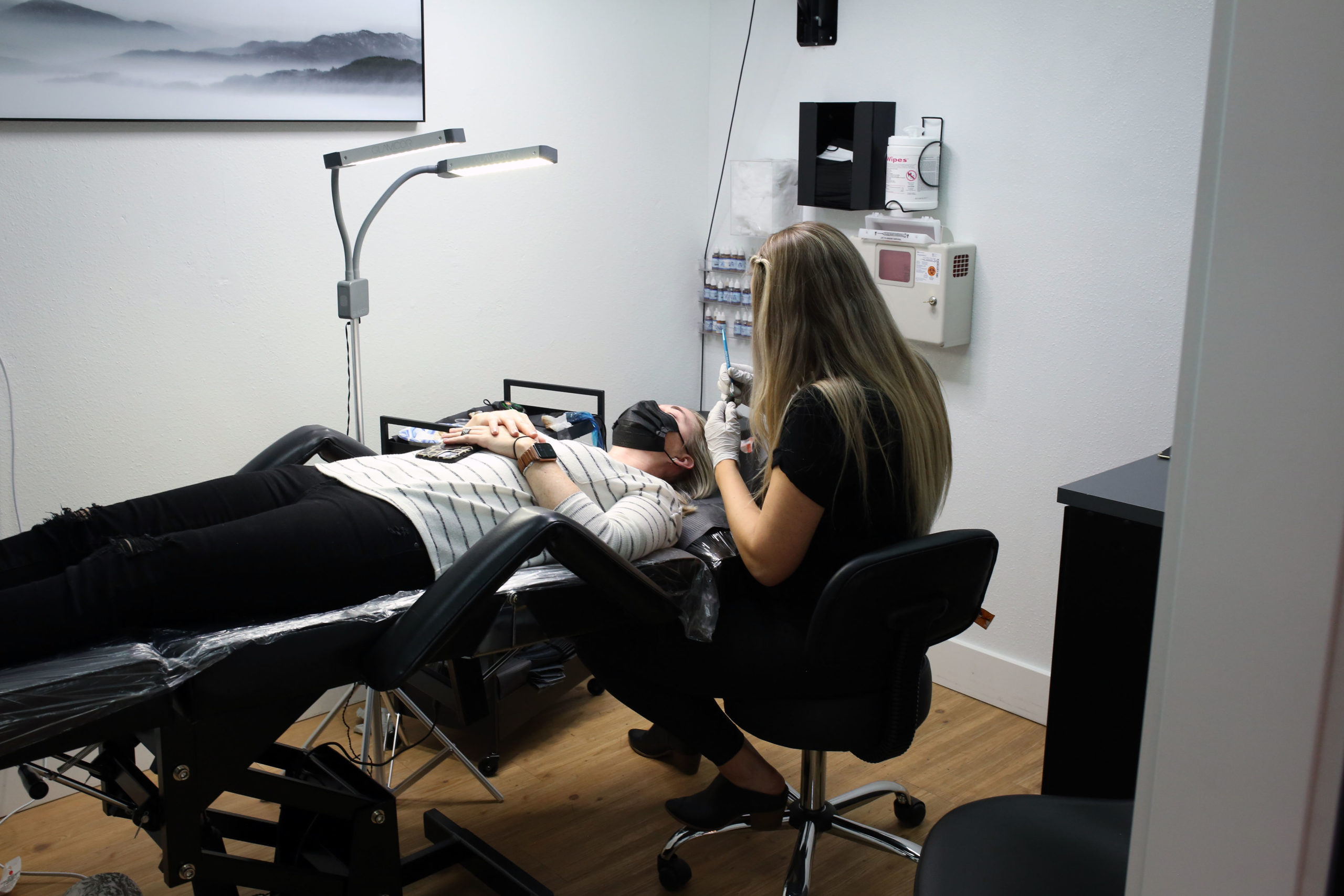How Haven can help you pick the right tattoo removal service in Gig Harbor, Washington
Tattoos are a popular form of self-expression, but sometimes our personal preferences or circumstances change, leading us to reconsider or remove a tattoo. Whether it’s a tattoo that no longer fits your style or a regrettable decision from your past, there are now more options than ever to help you erase or alter your ink. Two of the most popular methods for tattoo removal today are laser tattoo removal and saline tattoo removal. Haven Permanent Cosmetics & Aesthetics offers both of these services and can help you decide which one is right for you through a consultation.
In this post, we’ll break down both methods, compare their effectiveness, pain levels, side effects, and costs, and help you make an informed decision. Should you have any questions, please contact us to discuss our services in more detail.
What is Laser Tattoo Removal?
Laser tattoo removal is one of the most commonly used techniques for removing tattoos. It uses high-intensity light pulses to break down the ink particles under your skin. The body then naturally eliminates the fragmented ink over time through the lymphatic system. At Haven PMU we use the amazing Picoway Laser machine by Candela, a safe and effective way to remove tattoos.
How Does Laser Tattoo Removal Work?
Lasers target specific colors of ink using different wavelengths of light. The laser energy is absorbed by the tattoo pigments, causing them to break apart into smaller particles. Over time, the body’s immune system works to flush these particles out of the skin. The process typically requires multiple sessions, spaced out a few weeks apart, depending on the size, color, and depth of the tattoo.
Pros of Laser Tattoo Removal:
- Effectiveness: Laser removal with the Picoway machine is often considered the gold standard for tattoo removal. It can remove most tattoos, especially darker and more vibrant colors, and works on a variety of skin tones.
- Precision: Lasers can be finely tuned to target specific pigments in the skin, reducing the risk of damaging surrounding tissue.
- FDA-Approved: Laser tattoo removal is FDA-approved, which means it has been tested for safety and effectiveness.
- Minimal Scarring: While there is a risk of scarring with any tattoo removal procedure, laser removal tends to leave less scarring compared to older methods like dermabrasion.
Cons of Laser Tattoo Removal:
- Multiple Sessions: Laser removal typically requires several treatments, often between 6 and 10, depending on the tattoo. This can make the process lengthy and expensive. (less sessions when removing permanent make up)
- Pain: Laser tattoo removal can be quite painful, often described as feeling like the snap of a rubber band against the skin.
- Side Effects: Some side effects include redness, swelling, blistering, or changes in skin pigmentation (hypo or hyperpigmentation). These usually fade over time and are not an issue.


Cost:
The cost of laser tattoo removal at Haven varies depending on factors like the size of the tattoo and the number of sessions needed. The professionals at Haven can help determine the correct number of procedures for your tattoo removal and offer numerous packages for different tattoo sizes. Click here to view the full list of Laser Tattoo Removal packages we offer and learn more about our procedures and tools.
What is Saline Tattoo Removal?
Saline tattoo removal, also known as saline solution tattoo removal, is a newer, less invasive alternative to laser removal. It involves injecting a saline (saltwater) solution into the skin where the tattoo is located. The saline solution works to break up the tattoo ink, drawing it to the surface, where it eventually scabs and falls off.
How Does Saline Tattoo Removal Work?
A trained professional uses a needle to apply a saline solution into the tattooed area. The saline solution essentially “pulls” the tattoo ink to the surface of the skin, forming a scab. Over time, the scab falls off, and with it, the tattoo ink. This method is typically much slower than laser removal and may require several treatments. It is usually only for left over pigment after a laser session on the brows if a yellow color occurs which is rare.
Pros of Saline Tattoo Removal:
- Fewer Risks: Saline tattoo removal is considered a safer alternative to laser removal, with fewer risks of scarring, burns, or pigmentation changes.
- Less Pain: Many people report that saline tattoo removal is less painful than laser removal. It can feel like a mild scratching or pinching sensation.
- Natural Ingredients: Since saline solution is a natural substance (saltwater), the risk of an allergic reaction is minimal, making it a gentle option for sensitive skin.
- Effective for Certain Tattoos: Saline removal works best only on very light pigment.
Cons of Saline Tattoo Removal:
- Multiple Sessions: Just like with laser removal, saline tattoo removal typically requires multiple sessions. However, these treatments tend to be more spaced out, often requiring 6-12 weeks between sessions. You would need over 12 sessions on average and it will never fully remove the ink like a laser will.
- Limited Effectiveness: Saline removal is most effective on tattoos that are not deeply embedded in the skin and can be less successful on older tattoos or those with thick ink.
- Not Suitable for All Skin Types: Saline tattoo removal may not work as well on darker skin tones because it relies on creating scabs that draw the ink to the surface, which may not happen as effectively with more melanin-rich skin.

Cost:
At Haven PMU we generally recommend Laser Tattoo Removal, however in some cases Saline can be an effective choice for some customers. It can also be utilized in conjunction with Laser Tattoo Removal to reduce the appearance of scarring. Please consult with one of our professionals prior to scheduling to ensure you are a candidate for this service. We only offer this service at our office and do not offer direct booking online like our other services.
How to Choose Between Laser and Saline Tattoo Removal
Choosing the right method for you depends on several factors, including your tattoo’s age, size, and color, as well as your pain tolerance and budget.
- Tattoo Age and Ink Depth: Laser removal is usually more effective on older tattoos or tattoos with deep ink. Saline removal works best on newer tattoos or tattoos that are not too deeply embedded in the skin.
- Pain Tolerance: If you’re concerned about the pain, saline removal might be a better option since many people find it to be less painful than laser removal.
- Skin Type: If you have darker skin or sensitive skin, saline removal might be a safer option due to the lower risk of pigmentation changes or burns.
- Budget: Saline removal is typically more affordable upfront, though it might require more sessions. Laser removal is more expensive but may require fewer sessions for complete removal.
Conclusion: Which Method is Right for You?
Both laser tattoo removal and saline tattoo removal have their pros and cons, and the best choice depends on your specific situation. If you have a tattoo that’s been around for a while and you’re looking for fast and effective results, laser removal is likely the way to go. However, if you’re looking for a gentler, more natural option with fewer risks and a more gradual process, saline removal might be the right choice.
Before making a decision, it’s crucial to consult with a professional tattoo removal specialist who can assess your tattoo and help guide you to the best option for your skin type, tattoo, and goals.
Remember, tattoo removal is a personal decision, and there’s no one-size-fits-all answer. Take the time to research your options, ask questions, and choose the method that will give you the best chance of achieving the results you want.
In conclusion we recommend the LASER TATTOO REMOVAL option for most clients. It will work quicker and more effectively to accomplish your goals.



Leave A Comment